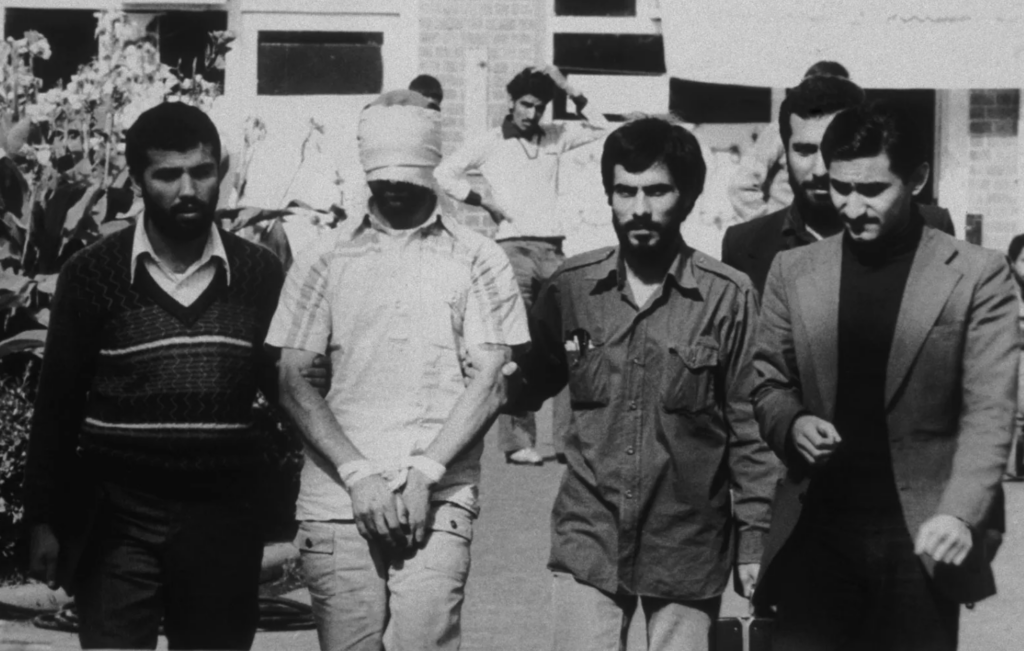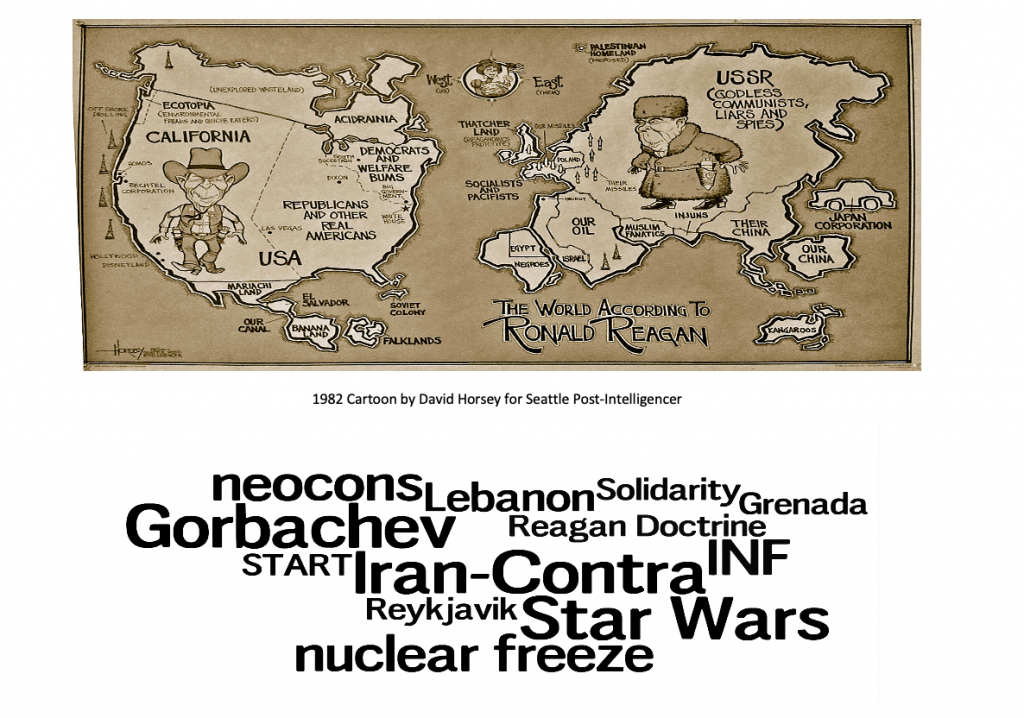Why did conservatives make a political resurgence in the 1980s?
Brands, Chapter 9: South by Southwest, 1979-83
- From Hollywood to Washington (pp. 213-17)
- Standing Tall (pp. 217-21)
- The Only Good Tax… (pp. 221-23)
- With God on Our Side (pp. 223-28)
- Dawn for the Sunbelt (pp. 228-32)
- Red Ink and Red Tape (pp. 232-36)
Iranian Hostage Crisis (1979)
“Spent ten months in solitary confinement. I was routinely beaten. I slept on bare concrete floors a lot of the time. I was often handcuffed. I sat in a room in solitary with a guy sitting ten feet away pointing a gun at me. I was never allowed to write a letter. My parents did not know I was alive until December 1980. Nor did the State Department. One of the guards smuggled a letter out for me.” —Michael Metrink0, American hostage in Iran, quoted in oral history by Martin Vatanka, History 118, Spring Semester, 2021
Glimpse into the Future (1979)
Image Gateway
Reagan Coalition
- Neoconservatives
- Christian conservatives
- Economic Libertarians
From Clara Blackwell’s oral history on integration in Mississippi
Discussion Question
- In 1980, Ronald Reagan spoke at the Neshoba County fair during his presidential campaign, extolling his support for states’ rights while not mentioning civil rights. What was the subtext behind that strategy and how does it relate to the elements of the Reagan coalition described above?
Featured Document: Speech by President Reagan, March 23, 1983
BEGIN 24:55: “After careful consultation with my advisers, including the Joint Chiefs of Staff, I believe there is a way. Let me share with you a vision of the future which offers hope. It is that we embark on a program to counter the awesome Soviet missile threat with measures that are defensive. Let us turn to the very strengths in technology that spawned our great industrial base and that have given us the quality of life we enjoy today.
What if free people could live secure in the knowledge that their security did not rest upon the threat of instant U.S. retaliation to deter a Soviet attack, that we could intercept and destroy strategic ballistic missiles before they reached our own soil or that of our allies?
I know this is a formidable, technical task, one that may not be accomplished before the end of this century. Yet, current technology has attained a level of sophistication where it’s reasonable for us to begin this effort. It will take years, probably decades of effort on many fronts. There will be failures and setbacks, just as there will be successes and breakthroughs. And as we proceed, we must remain constant in preserving the nuclear deterrent and maintaining a solid capability for flexible response. But isn’t it worth every investment necessary to free the world from the threat of nuclear war? We know it is.”


